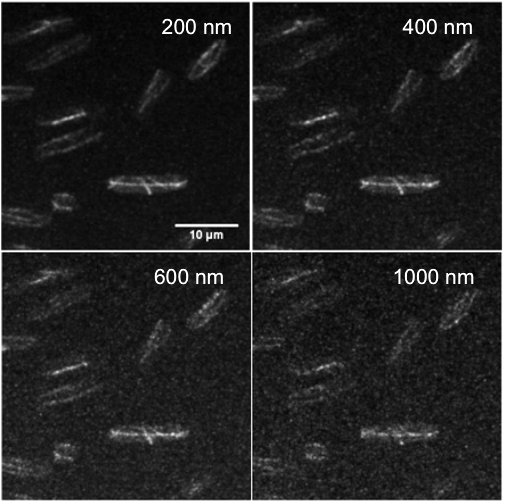Sampling affects the quality of deconvolution
As the Point Spread Function (PSF) is the basic "brick" of which the images are "built", there is an Ideal Sampling that records details at least on the scale of the PSF to gather all the available information. If your digital sampling occurs at a physical scale much larger than that of the PSF, deconvolution simply can't happen!!! You would be recording many PSF's inside each image pixel, and it wouldn't be possible to disentangle them anymore.
Because we are considering 3D images the ideal sampling is determined in the three directions of space. The Z sampling (along the optical axis) is usually established in your microscope by the Z-stepper: it is the distance between adjacent XY planes in the Volume Stack.
In the following experiment the same preparation was imaged several times in a spinning disk microscope with different Z samplings. Then each 3D image was deconvolved with Huygens Core. One XY slice for each deconvolution result is shown below. We can see how the quality of the deconvolution decreases with larger Z distances, because the 3D information content of the raw images is lost as the adjacent planes are less and less correlated. (The ideal distance in this case was ~ 170 nm).

"Deconvolution of the images of spinning disc confocal microscope improves image quality and resolution. The quality of the deconvolved images drops with the increase of slice distance" (Y. Belyaev, A. Seitz, S. Terjung, R. Pepperkok from the Advanced Light Microscopy Facility, EMBL Heidelberg, Germany. Deconvolution allows reliable imaging of living cells at low fluorescence level. Poster presented at the ELMI 2008 meeting. get pdf)
You can find the ideal sampling for your microscope by using the on-line Nyquist Calculator. Read more practical details in Ideal Sampling.
